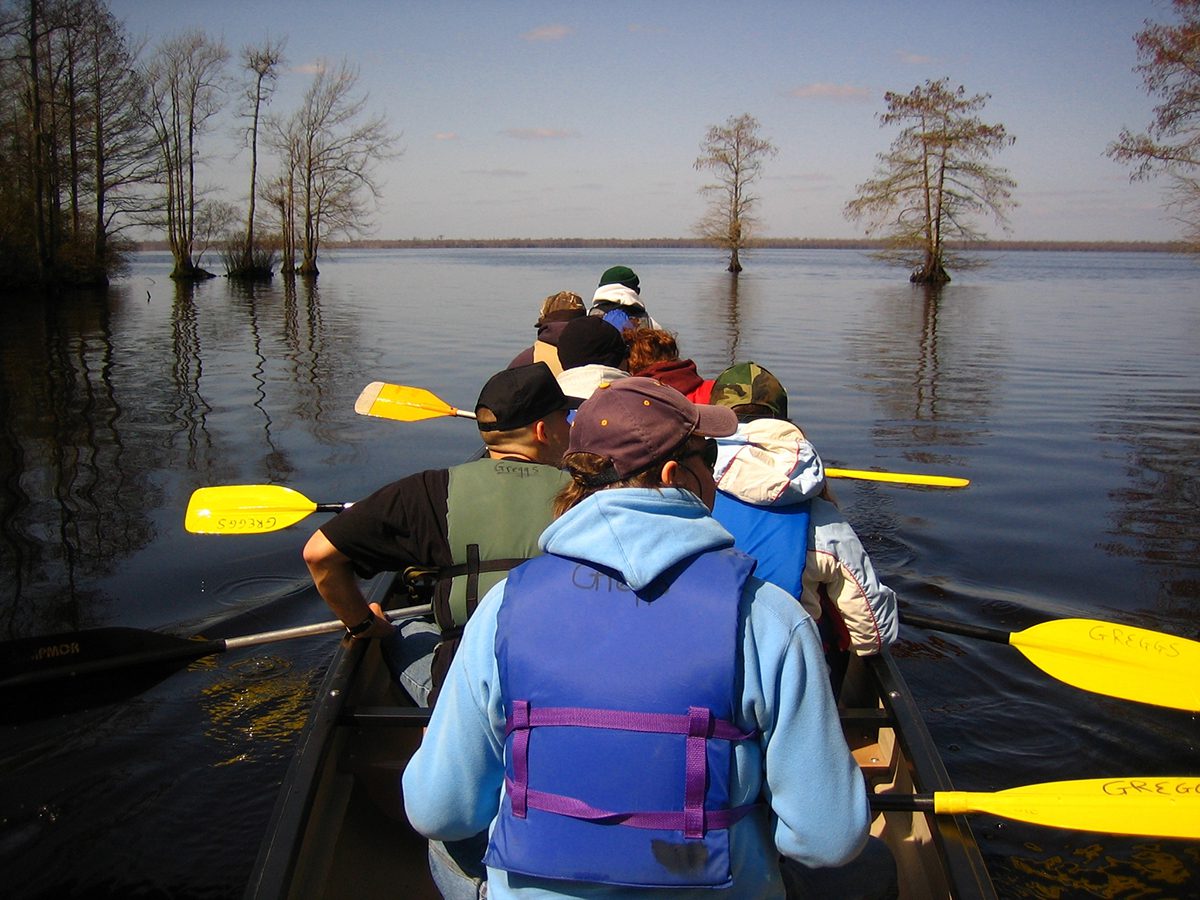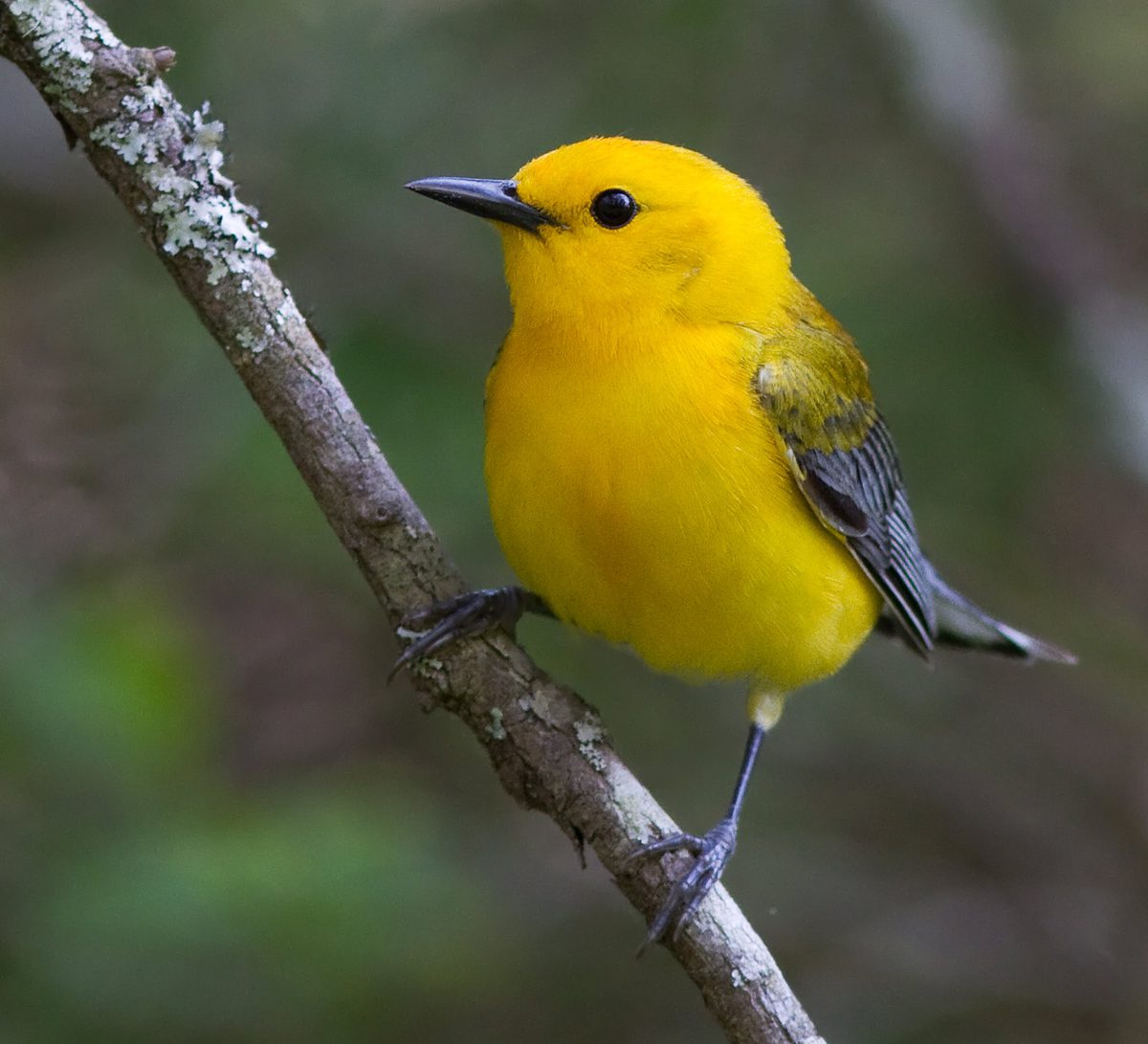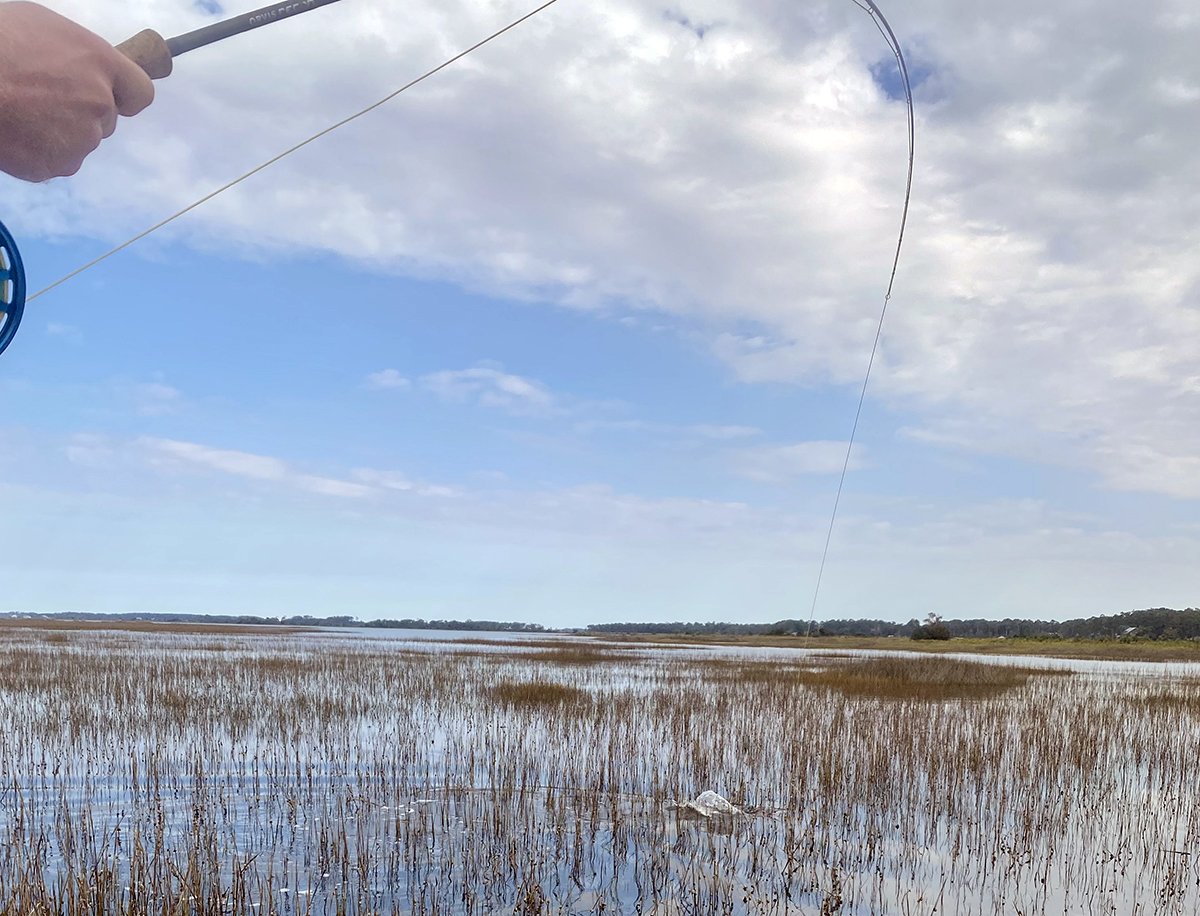
SUFFOLK, Va. – William Byrd, a Colonial-era surveyor and satirist who in 1728 established the dividing line between southeast Virginia and northeast North Carolina, is credited with blessing the Great Dismal Swamp with its evocative and ominous name.
The million or so acres, he wrote, had air “infected by malignant vapours” rising from “mire and filthiness.” It was, he declared, a “miserable morass” of spongey land, twisted vines and thick undergrowth.
Supporter Spotlight
“They started at the Atlantic Ocean and ran into an impenetrable wall of vegetation,” Chris Lowie, the manager of the Great Dismal Swamp National Wildlife Refuge, related in a recent interview. “And he didn’t even go through it. He told the crew it was the most god-awful dismal place, not fit for anybody.”
Byrd, who died in 1744 at 70, wrote several publications, the “Dividing Line Histories,” “Description of the Dismal, with the Proposal to drain the swamp,” and the somewhat satirical “The Secret History of the Line, “providing in-depth details of his impressions, as well as insights about early 18th-century history.
But three centuries later, Byrd’s vivid assessment of the Colonial-era swamplands, though a nonstarter for today’s tourism brochures, fortunately is part of the reason the Dismal Swamp is currently being considered for designation as a National Heritage Area.
The legislation that directs the secretary of interior to conduct a feasibility study has been passed in Congress and added to the study list, Lowie said. A report with recommendations is due to Congress within three years.
National Heritage Areas, which are administered by the National Park Service, engage communities in collaborative heritage preservation activities that are relevant to its needs and interests. Programs are community-driven and focused on conservation, preservation and economic development.
Supporter Spotlight

It is also a unique ecosystem, deserving of appreciation as well as protection.
The Great Dismal Swamp can boast of a cypress and cedar forest where at least 47 species of mammals and more than 200 species of birds breed or stop by during their migration, according to a February 2021 blog on The Wilderness Society website.
In addition to its prolific populations of biting insects, it also attracts dozens of species of butterfly. The swamp also harbors venomous snakes like rattlesnakes and water moccasins, but the same tannic acid from the cypress and gum trees that darkens the water also makes the water exceptionally pure. And its mucky peat soil holds tons of carbon dioxide, helping to mitigate carbon emissions in the atmosphere, a prime cause of climate change.
“National Heritage Areas are places where historic, cultural, and natural resources combine to form cohesive, nationally important landscapes,” according to its website. “Unlike national parks, National Heritage Areas are large lived-in landscapes.”
At about 113,000 acres, the refuge is the largest remaining intact area of the once-vast Dismal Swamp.
Historically, the swamp ranged from the James River to the Albemarle Sound, over to the North Landing River and North River. In North Carolina, it stretched over Currituck, Camden, Pasquotank and Gates counties. And in Virginia, it encompassed Chesapeake, Suffolk, Isle of Wight County, Portsmouth and Norfolk.
As it turns out, the swamp, despite and because of its unique peatland ecosystem, was a hub of activity from the earliest years of our nation. The Dismal, as it was known informally, was a place that reflected the best and worst of an evolving America, a place of refuge, forced labor, entrepreneurship, commerce.

“Thousands of African-American Maroons, Indigenous Americans, and enslaved African-American laborers lived there in a variety of communities and, in the process, created their own social and economic world between 1607 and 1860,” American University anthropology professor Daniel Sayers was quoted as saying in the March/April 2015 edition of Humanities, a publication of the National Endowment for the Humanities.
Maroons were enslaved people who escaped and created small townships within the swamp, taking advantage of the swamp’s undesirable conditions that hid them from Europeans. Historians estimate that as many as 50,000 freedom-seekers lived in the swamp. Later, the Dismal became one of the few water stops along the Underground Railroad that helped the enslaved to escape to free northern states. The refuge was the first to be named to the Underground Railroad Network to Freedom Program in 2003.
And George Washington slept there — numerous times. As one of 12 wealthy Virginians to form the Great Dismal Swamp Co. in 1763, he was instrumental in building the nation’s first canal, now the oldest operating canal, to drain the land for farming and real estate investment.
“During a time of soil depletion and scarcity of seaboard land, the Dismal Swamp — one of the last and largest expanses on the East Coast to resist settlement — promised the advantages of fertility and easy access to navigable water,” according to an article about the company published at mountvernon.org.
Washington, one of three managers for the company, was charged with securing titles and buying the enslaved people who dug the ditches and produced cedar shingles through the 1770s, according to the website. But goals of draining the swamp and growing hemp to export had failed.
After the War for Independence, Washington helped reconvene the partners. Despite the lack of success on engineering drainage, the effort eventually led to Washington devising a plan with Patrick Henry and others for the Dismal Swamp Co. to build a canal through the swamp to link the Chesapeake Bay and Albemarle Sound. Construction began in 1793 and was completed in 1805, more than five years after Washington’s death in December 1799.
Meanwhile, the company gave up on plans to drain the swamp and turned its focus to timber, leading to its first profitable year in 1810. Four years later, it was in business as the Dismal Swamp Land Co.
On Washington’s birthday in 1973, the Union Camp Corp., a forest products company, donated 49,097 acres of swamp to The Nature Conservancy, which then donated the land to the U.S. Fish and Wildlife Service. The refuge was officially established Aug. 30, 1974. But timber businesses are still thriving; International Paper operates its plant about 30 miles from the refuge headquarters in Suffolk, Lowie said.
As far as national wildlife refuges go, the Dismal Swamp is rather low-key. It has no fancy visitor center; but its 75,000 annual visitors can do self-guided tours with the help of interpretive signs and kiosks, including at the five different trailheads. The refuge is crisscrossed by 150 miles of ditches and road, of which about 60 miles are open for public use.
The popular annual bird festival, which is planned for April 29, attracts birders from all over the world, Lowie said. Planned activities include guided bird walks, bus tours and nature walks, as well as numerous family and educational offerings.
Not far from the refuge, the Suffolk Visitor Center has a Dismal Swamp exhibit, he said. And Chesapeake is currently building the Great Dismal Swamp Historic Village. It’s going to be a city park, with a visitor center there. The first Black school in Chesapeake has been moved to the site, he said, and they’ll have mockups of what a maroon camp looked like.
In addition, the refuge is starting to make plans for its 50th anniversary Aug. 30, 2024. But that date is inconveniently during the height of the swamp’s notoriously vicious bug population.
“So we’ll probably call all our events next year an anniversary event,” Lowrie said. “Yellow flies are the biggest issue — unless you’re out on the lake.”
Lowie said he believes it would beneficial to all stakeholders to have the Dismal Swamp join the other 62 designated National Heritage Areas that have been designated from 1984 through 2023. The first were National Heritage Area Illinois and the Michigan Canal National Heritage Area.
“I think it’ll bring more visitation here,” he said. “It will bring light to the significance of this landscape here of a dismal swamp.”
But it would also bring more attention to the profound cultural and historical significance of the Dismal Swamp, Lowie said.
“That may bring a different user group to say, ‘Oh wow, let me check this out,’” he said. “It should benefit the area by bringing more education, more outreach and hopefully more stewardship and protection.”
And the Dismal Swamp National Wildlife Refuge would be right in the thick of it, serving as a hub.
“Maybe we’ll have a visitor center one day,” Lowie added.







